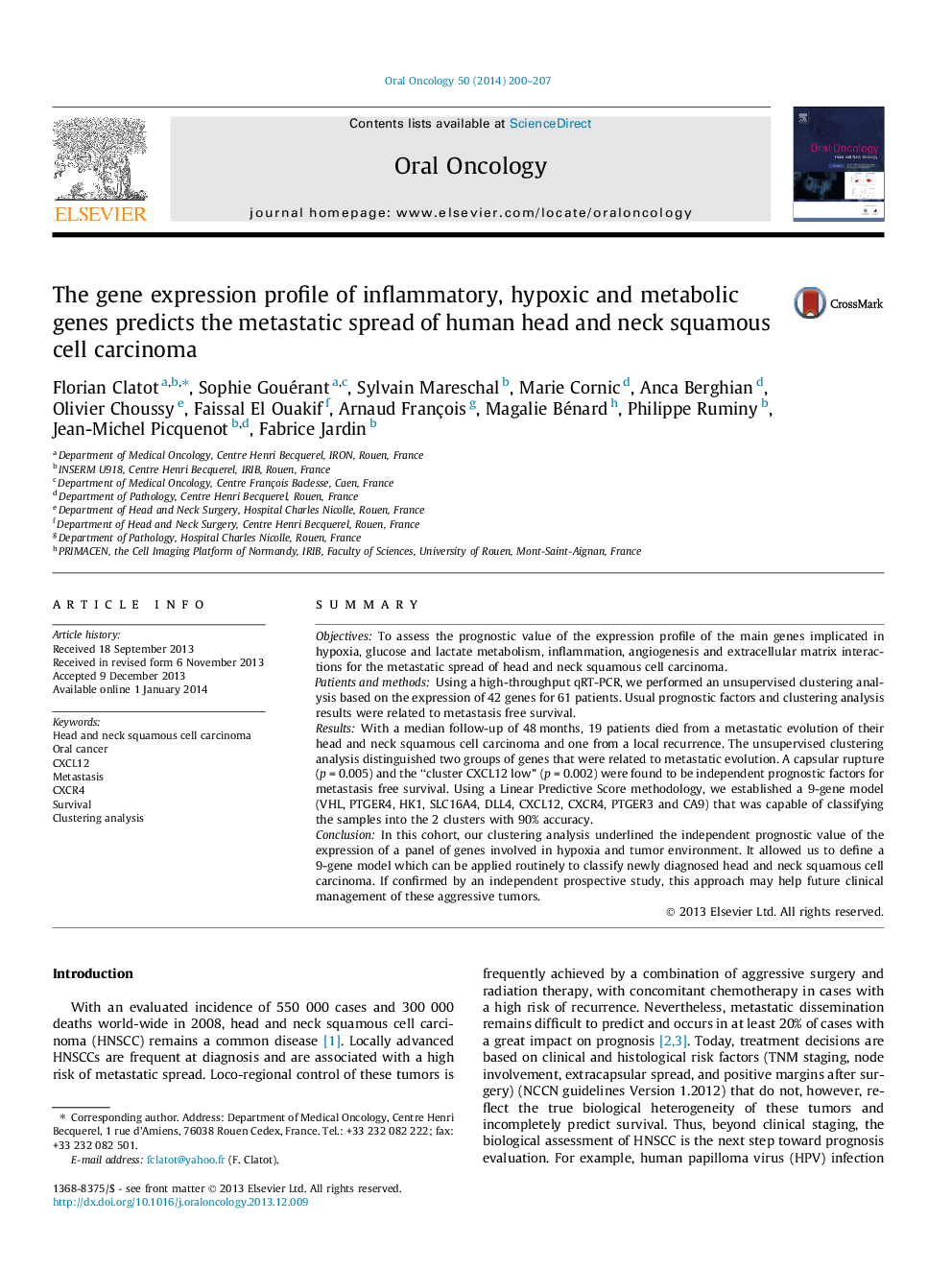| کد مقاله | کد نشریه | سال انتشار | مقاله انگلیسی | نسخه تمام متن |
|---|---|---|---|---|
| 3164310 | 1198780 | 2014 | 8 صفحه PDF | دانلود رایگان |
SummaryObjectivesTo assess the prognostic value of the expression profile of the main genes implicated in hypoxia, glucose and lactate metabolism, inflammation, angiogenesis and extracellular matrix interactions for the metastatic spread of head and neck squamous cell carcinoma.Patients and methodsUsing a high-throughput qRT-PCR, we performed an unsupervised clustering analysis based on the expression of 42 genes for 61 patients. Usual prognostic factors and clustering analysis results were related to metastasis free survival.ResultsWith a median follow-up of 48 months, 19 patients died from a metastatic evolution of their head and neck squamous cell carcinoma and one from a local recurrence. The unsupervised clustering analysis distinguished two groups of genes that were related to metastatic evolution. A capsular rupture (p = 0.005) and the “cluster CXCL12 low” (p = 0.002) were found to be independent prognostic factors for metastasis free survival. Using a Linear Predictive Score methodology, we established a 9-gene model (VHL, PTGER4, HK1, SLC16A4, DLL4, CXCL12, CXCR4, PTGER3 and CA9) that was capable of classifying the samples into the 2 clusters with 90% accuracy.ConclusionIn this cohort, our clustering analysis underlined the independent prognostic value of the expression of a panel of genes involved in hypoxia and tumor environment. It allowed us to define a 9-gene model which can be applied routinely to classify newly diagnosed head and neck squamous cell carcinoma. If confirmed by an independent prospective study, this approach may help future clinical management of these aggressive tumors.
Journal: Oral Oncology - Volume 50, Issue 3, March 2014, Pages 200–207
